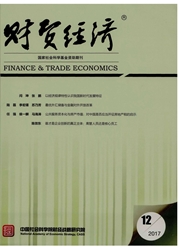

 中文摘要:
中文摘要:
近年来随着我国大量企业“走出去”,ODI对我国国内的就业效应已经成为理论研究者和决策者关注的焦点问题。本文利用我国2003—2010年动态面板数据模型进行实证研究发现:总体来看,ODI对我国国内就业产生替代效应;从不同经济发展水平地区来看,高收入地区ODI对国内就业产生补充效应,中等收入地区ODI对国内就业具有替代效应,低收入地区ODI对国内的就业效应不显著;从不同教育水平地区来看,高教育水平地区ODI对国内的就业表现为补充效应,而中等教育水平和低教育水平地区0DI对国内的就业表现为替代效应。进一步分析发现,教育水平能正向显著影响ODI的就业弹性,收入水平对oDI的就业弹性影响不明显。
 英文摘要:
英文摘要:
In recent years, as China enterprises' pace of "going out" is accelerating, the economic effects of ODI on our country have become the focus of theoretical studies, in which the employment effects of ODI require studying urgently. This paper uses 2003--2010 dynamic panel data model to conduct an empirical research on our country. The findings are: the employment effects of ODI are "substitutions effects". ODI from high income areas has "complementary effects" on employment, and ODI from middle-income areas has "substitutions effects", the effect of ODI on employment of low income areas is not significant. As far as different education level areas are concerned, the effects of ODI on employment are "complementary effects", and the middle and low education level areas have "substitution effects" . Further analysis finds that the level of education can positively influence the elasticity of ODI on employment, and income level does not significantly affect the employment elasticity of ODI.
 同期刊论文项目
同期刊论文项目
 同项目期刊论文
同项目期刊论文
 期刊信息
期刊信息
